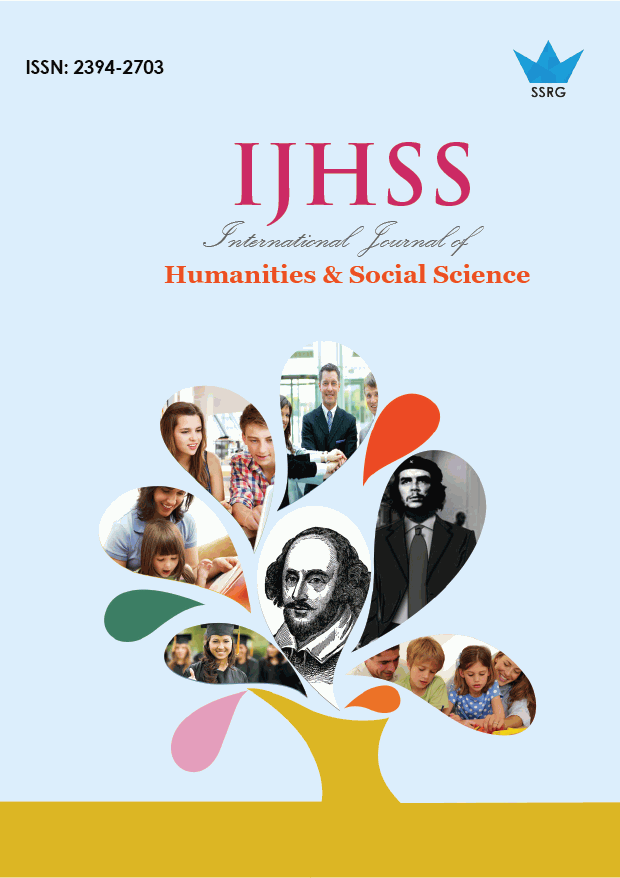Between Support and Silence: A Mixed-Methods Study on LGBTQ+ Perceptions in Urban India

| International Journal of Humanities and Social Science |
| © 2025 by SSRG - IJHSS Journal |
| Volume 12 Issue 4 |
| Year of Publication : 2025 |
| Authors : Aaliya Gupta |
How to Cite?
Aaliya Gupta, "Between Support and Silence: A Mixed-Methods Study on LGBTQ+ Perceptions in Urban India," SSRG International Journal of Humanities and Social Science, vol. 12, no. 4, pp. 17-31, 2025. Crossref, https://doi.org/10.14445/23942703/IJHSS-V12I4P103
Abstract:
This research delves into popular understandings of LGBTQ+ inclusion in India, examining how citizens encounter queer lives in education, healthcare, law, and media. While legal advancements have come via judgments such as NALSA and Navtej Johar, day-to-day acceptance is still unequal and superficial at times. The study examines how demographic indicators like gender, age, and religion influence individuals' ease, knowledge, and acceptance of LGBTQ+ inclusion. Utilizing a mixed-methods approach, the study examines over 100 participants' answers using both statistical measures and qualitative thematic findings. Principal findings indicate the strong theoretical support for equal rights, but there is ongoing personal discomfort, particularly in intimate or private contexts. Female interviewees expressed more optimism and acquaintance with LGBTQ+ individuals compared to male interviewees. The research underlines ongoing language, representation, and civic access disparities and emphasizes more targeted education, mental health services, and policy design reforms. These findings seek to inform more inclusive, evidence-based interventions within India's increasingly dynamic sociopolitical landscape.
Keywords:
Gender identity, Intersectionality, LGBTQ+ inclusion, Queer rights, Sexual orientation, Social acceptance.
References:
[1] Living on the Margins: Human Rights of LGBTQ+ Individuals in India, Amnesty International Publications, 2021. [Online]. Available: https://www.amnesty.org/en/what-we-do/discrimination/lgbti-rights/
[2] Mrudula Anne, Jamie Callahan, and Hyounju Kang, “Gender and Caste Intersectionality in the Indian Context,” Human Resource Management, vol. 6, pp. 31-48, 2013.
[Google Scholar] [Publisher Link]
[3] Jayne E. Stake, “Predictors of Change in Feminist Activism Through Women’s and Gender Studies,” Sex Roles, vol. 57, pp. 43-54, 2007.
[CrossRef] [Google Scholar] [Publisher Link]
[4] Zygmunt Bauman, Liquid Modernity, Polity Press, pp. 1- 228, 2000.
[Google Scholar] [Publisher Link]
[5] Pushpesh Kumar, Sexuality, Abjection and Queer Existence in Contemporary India, Routledge India, 1st ed., pp. 1-272, 2021.
[CrossRef] [Google Scholar] [Publisher Link]
[6] Rohit K. Dasgupta, “Queer Digital Cultures in India,” The International Encyclopedia of Gender, Media, and Communication, pp. 1-5, 2020.
[CrossRef] [Google Scholar] [Publisher Link]
[7] Chawla, A. (2023). Dignity Denied: A Review of India's Transgender Persons Act. Legal Review Quarterly. [Online]. Available. https://nalsar.ac.in/images/Final-NLR-Vol9.pdf
[8] John W. Creswell, and Vicki L. Plano Clark, Designing and Conducting Mixed Methods Research, 3rd Ed., SAGE Publications, 2018.
[Publisher Link]
[9] Drishti IAS, LGBTQ+ Rights in India: A Policy Overview, 2024. [Online]. Available: https://www.drishtiias.com
[10] Bandana Meher, “Queer on Reel: An Analytical Study on Representation and Identity Formation of Queer Community in Indian Cinema,” Society and Culture Development in India, vol. 4. no. 2, pp. 223-236, 2024.
[Google Scholar] [Publisher Link]
[11] GLAAD, State of LGBTQ+ Legal Awareness In Digital Societies, 2023. [Online]. Available: https://www.glaad.org
[12] Peter Kalina, “Performative Allyship,” Technium Social Sciences Journal, vol. 11, pp. 478-481, 2020.
[Google Scholar] [Publisher Link]
[13] Angana P. Chatterji, “Gendered and Sexual Violence in and Beyond South Asia,” ANTYAJAA: Indian Journal of Women and Social Change, vol. 1, no. 1, pp. 19-40, 2016.
[CrossRef] [Google Scholar] [Publisher Link]
[14] The Evolving Landscape of Queer Rights in India, Law Hunt, 2024. [Online]. Available: https://lawhunts.com/the-evolving-landscape-of-queer-rights-in-india/
[15] Paulina S. Mposo, “Alternative Sexualities in India,” Master of Arts Thesis, Leiden University, pp. 1-127, 2017.
[Google Scholar] [Publisher Link]
[16] Shaikh Mohammed Bilal, Zafiya Mallick, and Jignesh Vidani, “Gen Z's Perception on Shaping Public Opinion Through Social Media Post in Ahmedabad City,” International Journal of Integrative Research, vol. 2, no. 11, pp. 839-860, 2024.
[Google Scholar] [Publisher Link]
[17] Sweta Saraff et al., “Stigma and Health of Indian LGBT Population: A Systematic Review,” Stigma and Health, vol. 7, no. 2, pp. 178-195, 2022.
[Google Scholar] [Publisher Link]
[18] UNESCO, Out in the Open: Education Sector Responses to Violence Based on Sexual Orientation and Gender Identity/Expression, UNESCO Publishing, Paris, 2019. [Online]. Available: https://unesdoc.unesco.org/ark:/48223/pf0000244652
[19] Youth Advocacy for LGBTIQ+ Inclusive Education in Asia, UNESCO. [Online]. Available: https://www.unesco.org/en/articles/youth-advocacy-lgbtiq-inclusive-education-asia
[20] Gregory R. Sandman, Shifting Political Sands of the LGBTQ+ Search for Equality, Advancing Equity - Health, Rights, and Representation in LGBTQ+ Communities, Intechopen, 2025.
[Google Scholar] [Publisher Link]

 10.14445/23942703/IJHSS-V12I4P103
10.14445/23942703/IJHSS-V12I4P103